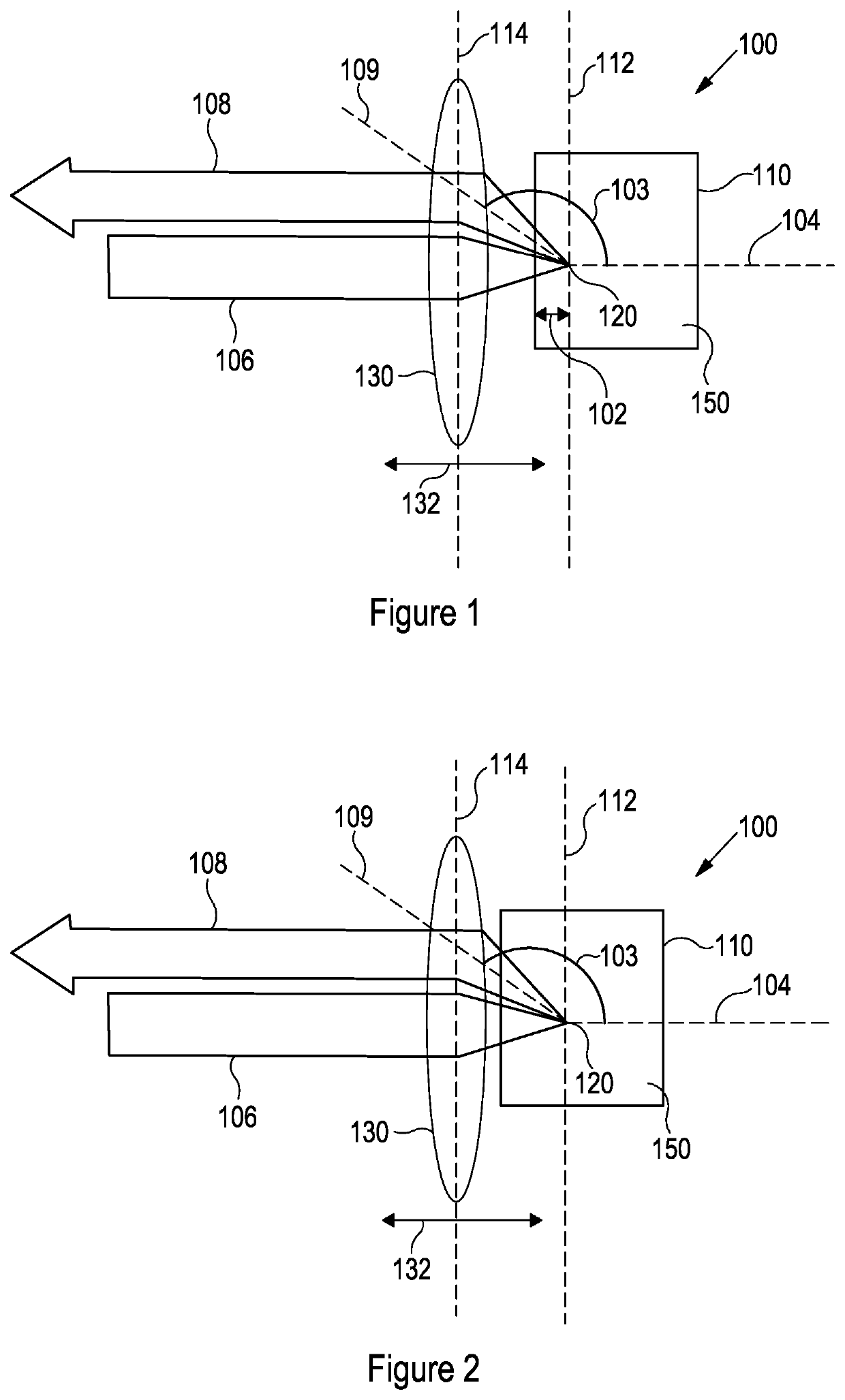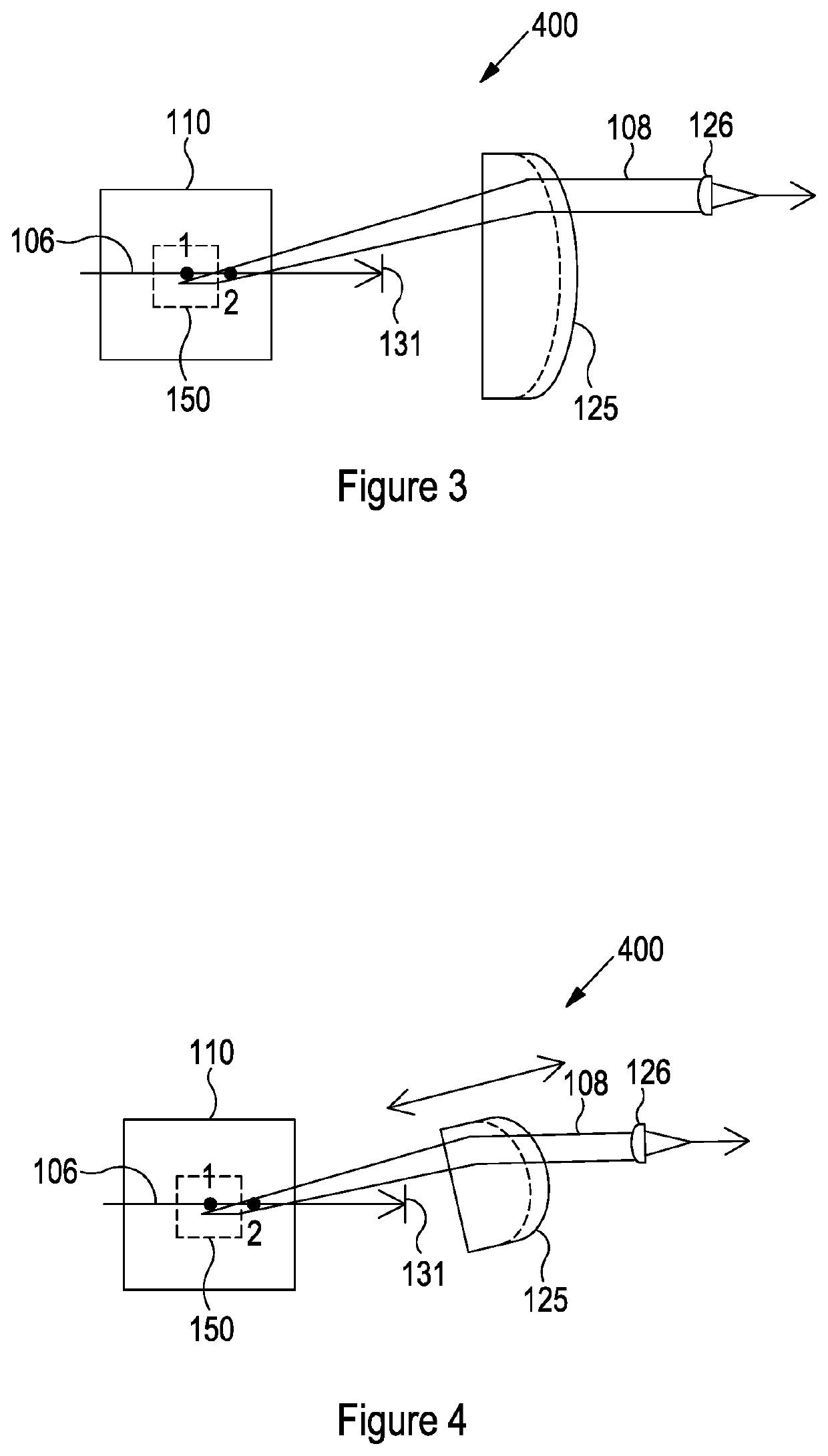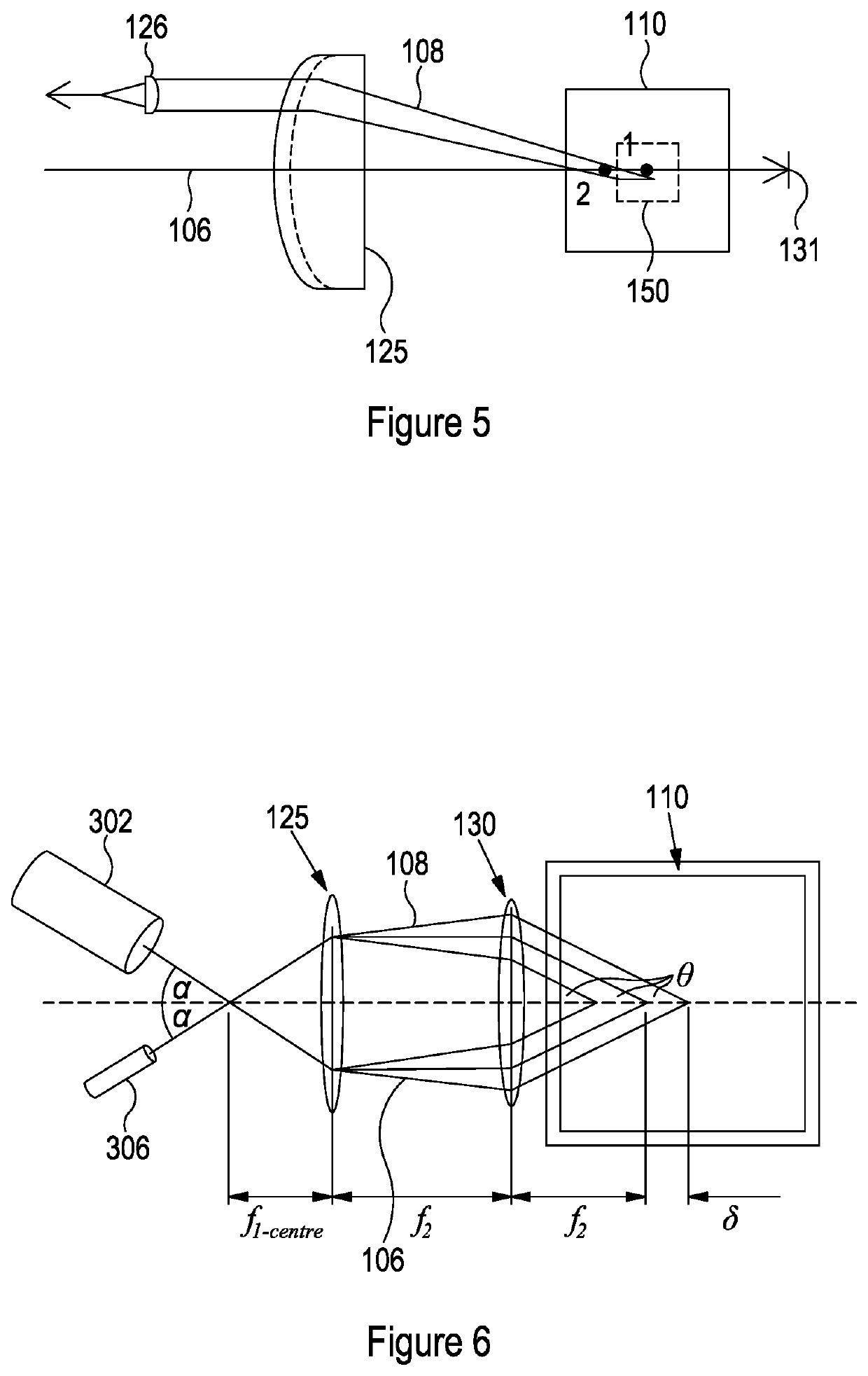Particle characterisation with a focus tuneable lens
a technology of focus tuneable lens and particle characterisation, which is applied in the direction of material analysis, suspensions and porous materials analysis, instruments, etc., can solve problems such as degrading techniques, and achieve the effects of reducing the signal to noise ratio, reducing multiple scattering, and similar relaxation tim
- Summary
- Abstract
- Description
- Claims
- Application Information
AI Technical Summary
Benefits of technology
Problems solved by technology
Method used
Image
Examples
Embodiment Construction
[0152]Referring to FIGS. 1 and 2, a prior art NIBS arrangement 100 is shown, in which an illumination beam 106 is focussed on a sample 150 within a sample cell 110 by a focussing lens 130.
[0153]A detection optical path 108 receives light scattered from the illumination beam 106 by particles dispersed within the sample 150. The detection optical path 108 defines the field of view of a detector (not shown) for detecting the scattered light. The detection optical path 108 may receive light scattered at a narrow range of angles, centred on a specific scattering angle 103 along detection axis 109. The detection optical path 108 is also focussed within the sample 150 by the focussing lens 130.
[0154]The intersection of the illumination beam 106 and the detection optical path 108 define a detection region 120. The position of the detection region 120 within the sample cell 110 can be varied by moving the focussing lens 130, which varies the position of a focal plane 112 of the focussing len...
PUM
| Property | Measurement | Unit |
|---|---|---|
| scatter angles | aaaaa | aaaaa |
| distance | aaaaa | aaaaa |
| distance | aaaaa | aaaaa |
Abstract
Description
Claims
Application Information
 Login to View More
Login to View More - R&D
- Intellectual Property
- Life Sciences
- Materials
- Tech Scout
- Unparalleled Data Quality
- Higher Quality Content
- 60% Fewer Hallucinations
Browse by: Latest US Patents, China's latest patents, Technical Efficacy Thesaurus, Application Domain, Technology Topic, Popular Technical Reports.
© 2025 PatSnap. All rights reserved.Legal|Privacy policy|Modern Slavery Act Transparency Statement|Sitemap|About US| Contact US: help@patsnap.com



